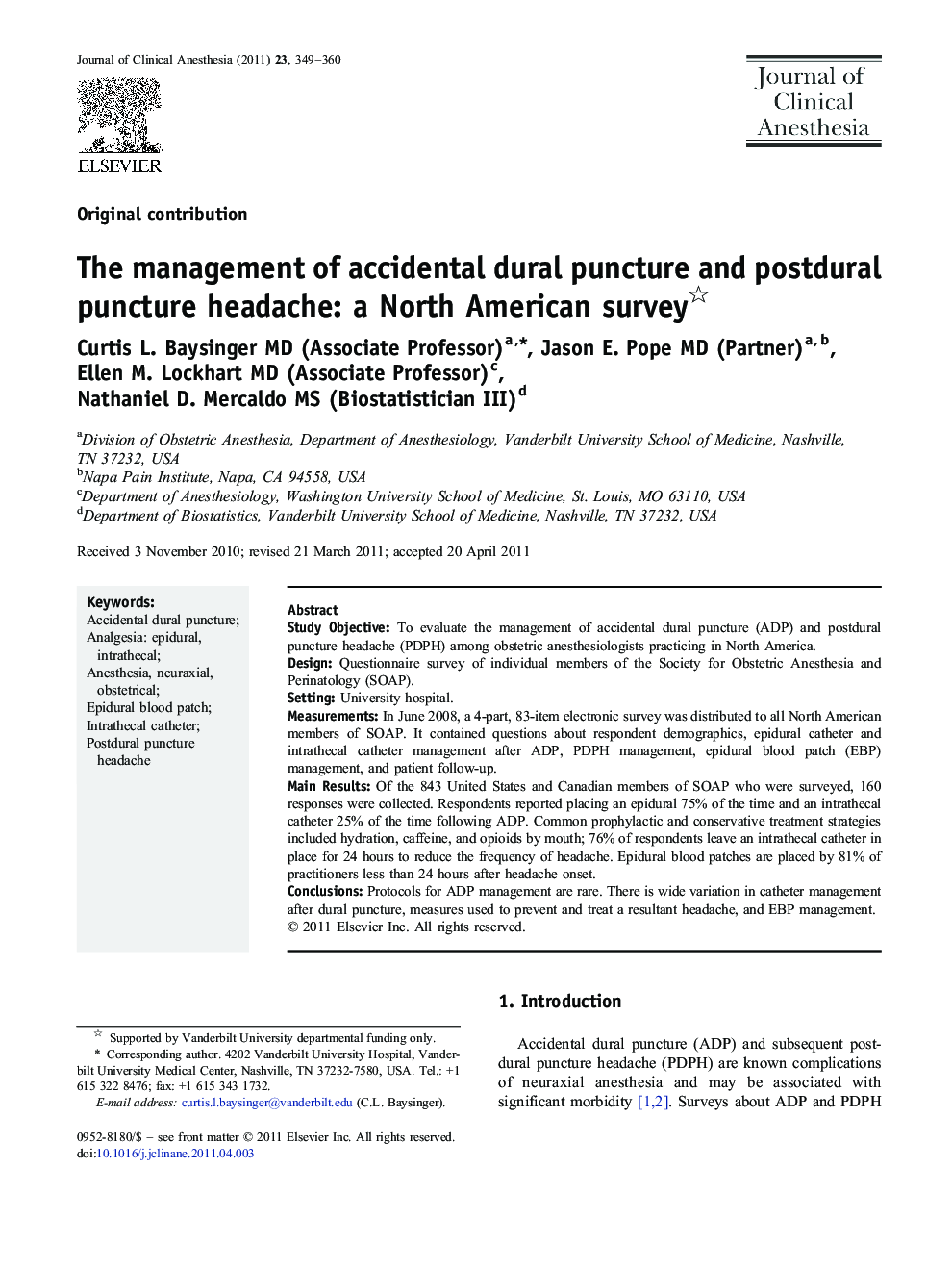| Article ID | Journal | Published Year | Pages | File Type |
|---|---|---|---|---|
| 2763340 | Journal of Clinical Anesthesia | 2011 | 12 Pages |
Study ObjectiveTo evaluate the management of accidental dural puncture (ADP) and postdural puncture headache (PDPH) among obstetric anesthesiologists practicing in North America.DesignQuestionnaire survey of individual members of the Society for Obstetric Anesthesia and Perinatology (SOAP).SettingUniversity hospital.MeasurementsIn June 2008, a 4-part, 83-item electronic survey was distributed to all North American members of SOAP. It contained questions about respondent demographics, epidural catheter and intrathecal catheter management after ADP, PDPH management, epidural blood patch (EBP) management, and patient follow-up.Main ResultsOf the 843 United States and Canadian members of SOAP who were surveyed, 160 responses were collected. Respondents reported placing an epidural 75% of the time and an intrathecal catheter 25% of the time following ADP. Common prophylactic and conservative treatment strategies included hydration, caffeine, and opioids by mouth; 76% of respondents leave an intrathecal catheter in place for 24 hours to reduce the frequency of headache. Epidural blood patches are placed by 81% of practitioners less than 24 hours after headache onset.ConclusionsProtocols for ADP management are rare. There is wide variation in catheter management after dural puncture, measures used to prevent and treat a resultant headache, and EBP management.
